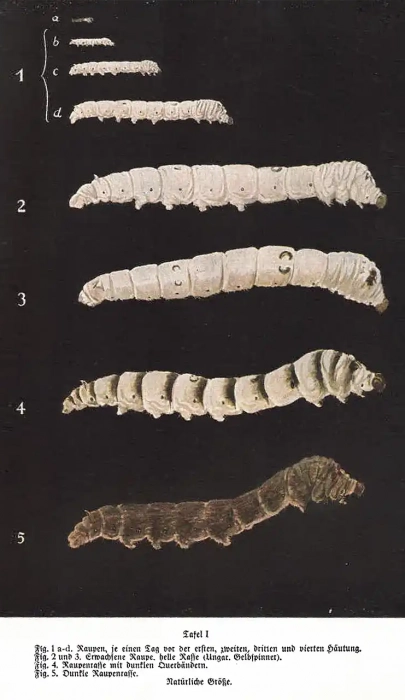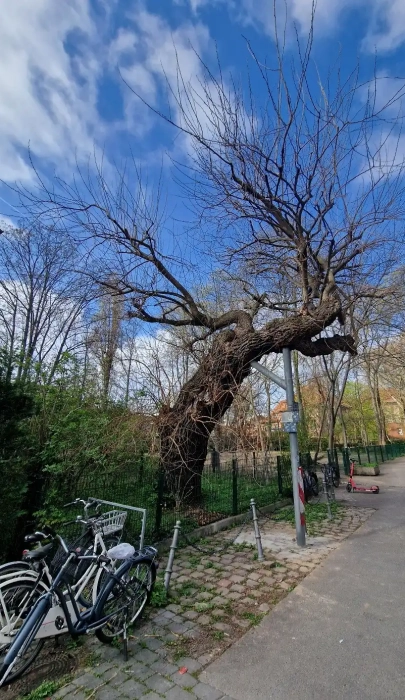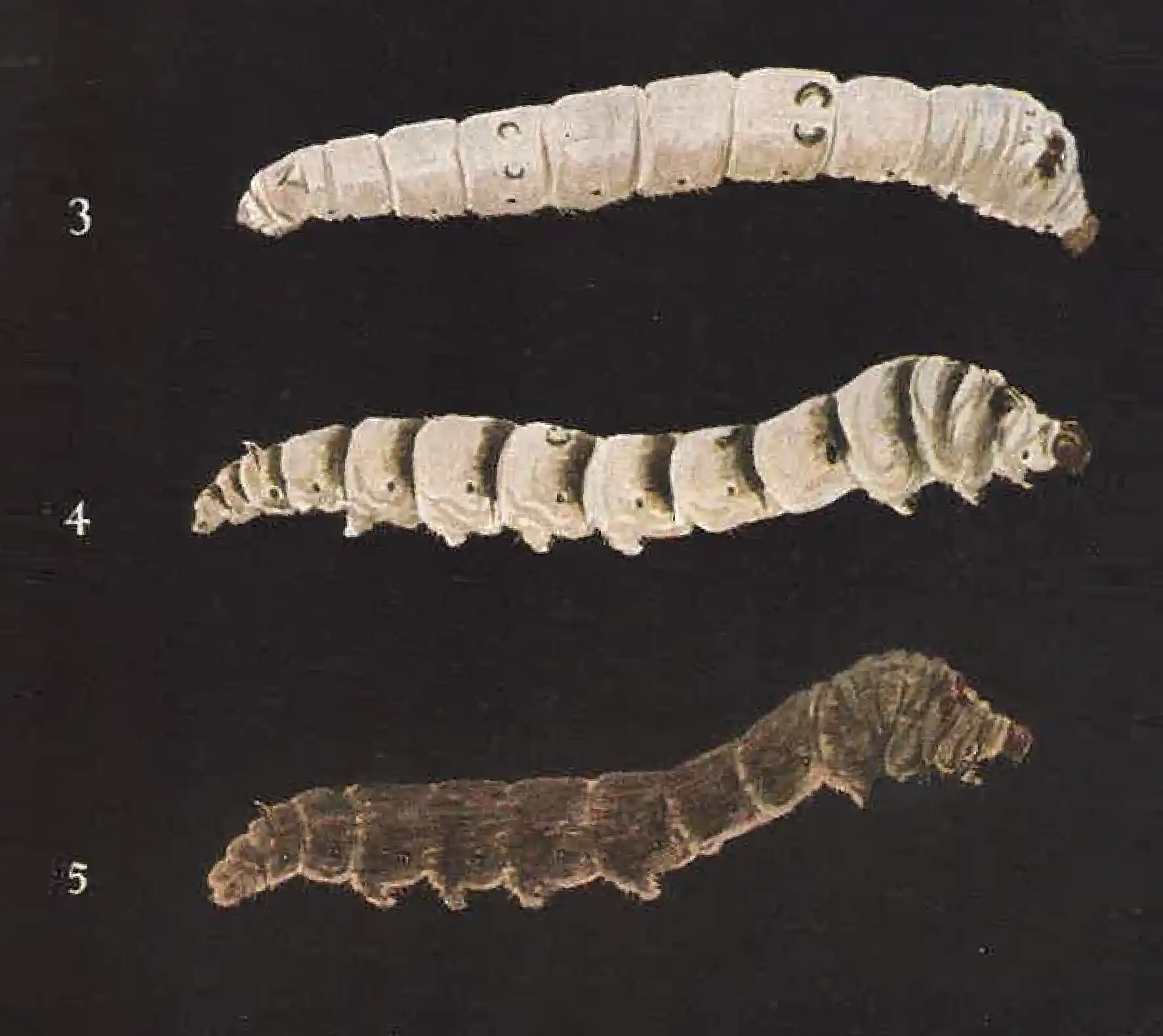The idea of mulberries to the court
Frederick styled himself as a philosopher-king, mirroring role models from the past such as Caesar and Alexander the Great, who were not only great generals, but also brilliant thinkers, writers, and economists. In line with the contemporary Umwelt (spirit) of the broader Enlightenment movement, he desired to attract many intellectuals, including Voltaire, who was famous for his personal friendship with the Prussian king. It was, however, another philosopher and Voltaire’s adversary, who introduced the idea of cultivating mulberries to the court in the early 18th century: the versatile Gottfried Wilhelm Leibniz, a philosopher, mathematician, and tireless project-promoter. He presented his vision to Frederick the Great’s father, Frederick I of Prussia, also known as the Sergeant-King. His majesty, a stern man with a mind for warfare, discipline, drinking and smoking, did not seem too keen on the idea, however. After all, he was known for his rigour and his beliefs about how the Prussian population should think and dress: and he was famously at odds with his young son for dressing “like a Frenchman”, in elegant and fashionable silks.


However, the idea germinated slowly, and it was only when Frederick II was permitted to rule, that sericulture became official royal business. In 1742, he issued a sweeping edict: mulberry trees were to be planted in every orphanage, along every public alleyway, and across his private estates. The law did not just encourage silk production, it demanded it. Prussians who damaged mulberry trees could be fined; those who excelled in cultivation were awarded medals. One medal bore the slogan: "Sie kleidet den Reichen – sie nähret den Armen" (“It clothes the rich – it feeds the poor”), a promise of prosperity for all. Frederick's silk policy was not just economic; it was also deeply symbolic. After all, silk was a luxury import. By producing it domestically, the king hoped to boost self-sufficiency, support the rural poor, and drape Prussian industry in prestige. Mulberry groves popped up across the kingdom, from Berlin to Potsdam, where streets still carry names such as Maulbeerallee (“Mulberry Avenue”) and Filandastraße, still nod to long-vanished silk mills. Some of the mulberry trees from that era are still standing today, including a gnarled specimen in central Berlin, living relics of an ambitious royal plan.
But alas, nature and nation were not always on the same page. Prussia’s climate was not ideal for silk cultivation. Cold snaps and damp seasons stressed the trees; the silkworms, delicate creatures at the best of times, were plagued by disease. Even worse, the people simply hated the job. Tending to wriggle larvae and sticky cocoons was not exactly the dream occupation of 18th - century Prussian farmers. In fact, Goethe himself recalls the family ordeal of silkworm rearing in his autobiography. While his father had enthusiastically followed the king’s call, young Johann Wolfgang found the process anything but poetic.
“Still more unpleasant was it when rain fell during the last epoch, for these creatures cannot at all endure moisture, and the wet leaves had to be carefully wiped and dried, which could not always be done quite perfectly; and for this, or perhaps some other reason also, various diseases came among the flock, by which the poor things were swept off in thousands. The corruption which ensued produced a smell really pestilential and because the dead and diseased had to be taken away and separated from the healthy, the business was indeed extremely wearisome and repulsive, and caused many an unhappy hour to us children.”
Cover of a Nazi-era sericulture manual
Nevertheless, despite the setbacks, Frederick’s silk initiative did yield some results. The town of Krefeld, in western Prussia, blossomed into a hub of silk and velvet production. It eventually earned the nickname Samt- und Seidenstadt (“Velvet and Silk City”) and remains proud of its heritage today, with a silk museum preserving its opulent past. Frederick’s experiment sparked imitators. Neighbouring states such as the Grand Duchy of Mecklenburg- Strelitz launched their own sericulture initiatives. By 1848, the region had established its first silk producers’ association. Although the infamous silkworm disease pebrine caused a temporary collapse in production in the 1860s, it resumed some 30 years later; a testament to the enduring dream of homegrown silk. However, like many well-meaning projects of the Enlightenment, Prussian silk became entangled in darker histories. In the 1930s, the Third Reich, obsessed with autarky and a mythical German past, resurrected the silk project. In 1936, the regime ordered that 20,000 school gardens be planted with mulberry trees and began training teachers in sericulture. The goal was to produce silk for parachutes in the event of war. This eerie parallel to Frederick’s top-down silk initiative was no coincidence; the Nazis saw themselves as heirs to Prussian rig our and self-sufficiency. Today, the kingdom of Prussia no longer exists, but its silk legacy lingers, quietly and greenly, in urban alleys and park groves, in archival medals and street names, in museum displays and Goethe’s memoirs. It is a tale that intertwines threads of science, politics, philosophy, and memory in one of the more unusual corners of European sericulture. So, the next time you pass a mulberry tree in Berlin, remember that it is there not just for its ornamental value, but because men like Frederik the Great and Leibniz found such beauty in a little worm and its fabric that they decided to defy weather and climate to bring silk to a place where it had never been before.


